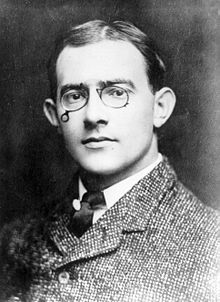The Lincoln Highway was inspired by the Good Roads Movement. In turn, the success of the Lincoln Highway and the resulting economic boost to the governments, businesses and citizens along its route inspired the creation of many other named long-distance roads (known as National Auto Trails), such as the Yellowstone Trail, National Old Trails Road, Dixie Highway, Jefferson Highway, Bankhead Highway, Jackson Highway, Meridian Highway and Victory Highway. Many of these named highways were supplanted by the United States Numbered Highways system of 1926. Most of the 1928 Lincoln Highway route became U.S. Route 30 (US 30), with portions becoming US 1 in the East and US 40, US 50 and US 93 in the West. Since 1928, many sections of US 30 have been re-aligned with new bypasses; therefore, today's US 30 aligns with less than 25% of the original 1913–28 Lincoln Highway routes.
Most significantly, the Lincoln Highway inspired the Federal Aid Highway Act of 1956, also known as the National Interstate and Defense Highways Act (Public Law 84-627), which was championed by President Dwight D. Eisenhower, influenced by his experiences as a young soldier crossing the country in the 1919 Army Convoy on the Lincoln Highway. Today, Interstate 80 (I-80) is the cross-country highway most closely aligned with the Lincoln Highway. In the West, particularly in Wyoming, Utah and California, sections of I-80 are paved directly over alignments of the Lincoln Highway.
The Lincoln Highway Association, originally established in 1913 to plan, promote, and sign the highway, was re-formed in 1992 and is now dedicated to promoting and preserving the road.
Concept and promotion
In 1912, railroads dominated interstate transportation in America, and roadways were primarily of local interest. Outside cities, "market roads" were sometimes maintained by counties or townships, but maintenance of rural roads fell to those who lived along them. Many states had constitutional prohibitions against funding "internal improvements" such as road projects, and federal highway programs were not to become effective until 1921.At the time, the country had about 2.2 million miles (3.5×106 km) of rural roads, of which a mere 8.66% (190,476 miles or 306,541 kilometres) had "improved" surfaces: gravel, stone, sand-clay, brick, shells, oiled earth, etc. Interstate roads were considered a luxury, something only for wealthy travelers who could spend weeks riding around in their automobiles.
Support for a system of improved interstate highways had been growing. For example, in 1911, Champ Clark, Speaker of the United States House of Representatives, wrote, "I believe the time has come for the general Government to actively and powerfully co-operate with the States in building a great system of public highways ... that would bring its benefits to every citizen in the country".[6] However, Congress as a whole was not yet ready to commit funding to such projects.
Carl Graham Fisher, 1909
Fisher and his associates chose a name for the road, naming it after one of Fisher's heroes, Abraham Lincoln. At first they had to consider other names,[8] such as "The Coast-to-Coast Rock Highway" or "The Ocean-to-Ocean Highway," because the Lincoln Highway name had been reserved earlier by a group of Easterners who were seeking support to build their Lincoln Highway from Washington to Gettysburg on federal funds. When Congress turned down their proposed appropriation, the project collapsed, and Fisher's preferred name became readily available.
On July 1, 1913, the Lincoln Highway Association (LHA) was established "to procure the establishment of a continuous improved highway from the Atlantic to the Pacific, open to lawful traffic of all description without toll charges".[1] The first goal of the LHA was to build the rock highway from Times Square in New York City to Lincoln Park in San Francisco. The second goal was to promote the Lincoln Highway as an example to, in Fisher's words, "stimulate as nothing else could the building of enduring highways everywhere that will not only be a credit to the American people but that will also mean much to American agriculture and American commerce".[1] Henry Joy was named as the LHA president, so that although Carl Fisher remained a driving force in furthering the goals of the association, it would not appear as his one-man crusade.[8]
The first section of the Lincoln Highway to be completed and dedicated was the Essex and Hudson Lincoln Highway, running along the former Newark Plank Road from Newark, New Jersey, to Jersey City, New Jersey. It was dedicated on December 13, 1913[9] at the request of the Associated Automobile Clubs of New Jersey and the Newark Motor Club, and was named after the two counties it passed through.[10][11]

No comments:
Post a Comment